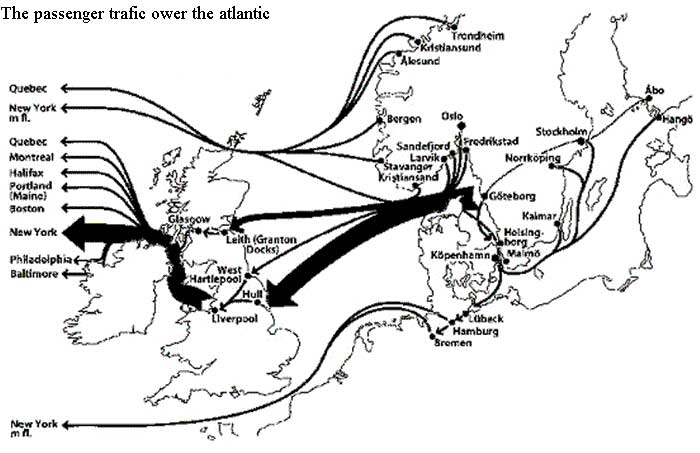
Updated !

Lake Bullaren a summe day 2016
The Emigration to
The registries emigration from Sweden to North America totals up to approximately 1.2 million people during 1860 – 1914, this from a population of approximately 4 million. Most of the emigrants were young people between 15 – 35 years old. Of these, it is estimated about 200,000 have returned to
The cause of emigration was lack of means for support, mostly in the countryside. By tradition it was the eldest son that would take over the farm and the other sons would have to go somewhere else to earn their living. The severe failure of farming crops in the 1860´s increased the emigration especially from Småland and Värmland.
President Lincoln’s law of 1862, concerning free land and the enormous expansion in industry were some reasons for the emigration from
Journey’s
What was it that the emigrants faced? Was it the glory land? Carl Ludvig Fredrikson from Mo parish writes in 1894 to his brother-in-law Emanuel Olson from Tyft and reports:
“Times are still bad here. There are about 5 million workers here without employment in US so the poverty is big for many people in this country. I and Alrik are working together for the moment but I hope to get carpenter work here in
Most Swedes Stayed in the Cities.
In 1910, 60% of Swedish born Americans lived in the cities. It seemed that the Swedes combined moving to another country with moving from countryside to cities. The emigrants came to expanding cities like
The emigrants from Bullaren settled in twenty of
We hope that you will find the material interesting and recognize people from your own family. The register can be searched by the surname of the man, or woman. If it is a family, by the surname of the head of the family.
We estimate that around 2,500 people from Bullaren moved to the
The first emigrants that we have tracked are five young people, four men and one woman:
Pål Ingelson Augustin, Olof Anderson Ehn, Elias Anderson Ehn, Johan Larson and Cathrina Olofsdotter. Cathrina is married to Olof Anderson Ehn and the company leaves Bullaren on

© Copyright bullaren-emigranterna.se